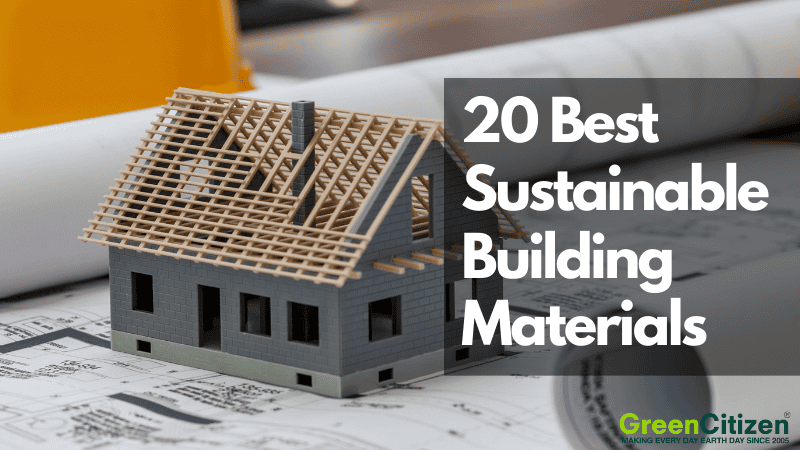In the realm of home construction, sustainable building materials are emerging as key players in shaping a greener future.
As the world grapples with environmental challenges, the importance of these eco-friendly options cannot be overstated. They are crucial not just for their low impact on the planet but also for their role in creating healthier living spaces.
This article delves into the world of sustainable building materials, offering insights and factual knowledge about 20 such options that are revolutionizing the way we think about construction and our environment. Join me in exploring these innovative materials that promise a more sustainable and eco-conscious future.
1. Bamboo
Bamboo is not just a plant; it’s a revolutionary element in sustainable building materials, heralding a new era in eco-friendly construction.
Its ability to grow up to a meter per day in the right conditions sets it apart as one of the fastest-growing natural resources on the planet. This rapid regeneration means bamboo can be harvested without causing deforestation, making it a highly renewable source that also contributes to carbon sequestration.
Its tensile strength rivals that of steel, and its natural flexibility allows for innovative design in both residential and commercial structures.
Bamboo’s unique aesthetic adds a warm, organic touch to interiors, enhancing the appeal of eco-conscious designs.
However, the use of bamboo isn’t without its challenges. To ensure durability and longevity, bamboo requires specific treatments to resist moisture and prevent decay. Additionally, the majority of bamboo used in construction is grown in tropical regions. The transportation of bamboo to global markets can contribute to a higher carbon footprint, partially offsetting its environmental benefits.
Nonetheless, its overall positive impact on sustainable construction practices makes bamboo a material of choice for forward-thinking architects and builders.

2. Recycled Steel
Recycled steel has emerged as a vital component in the realm of sustainable architecture, championing the ethos of green building through its innovative reuse.
By diverting steel from old buildings and scrap materials towards new construction projects, this practice plays a significant role in reducing the industrial carbon footprint.
The process of producing new steel is highly energy-intensive, involving the extraction and processing of iron ore. By contrast, recycling steel uses considerably less energy, often cited as around 60-75% less, contributing to significant energy conservation and reduction in greenhouse gas emissions.
The inherent strength and durability of steel make it an indispensable material in construction, known for its ability to withstand extreme weather conditions and resist seismic activities, which is crucial in areas prone to natural disasters.
However, the journey of recycled steel isn’t without its challenges. The recycling process itself, while less energy-intensive than producing new steel, still requires a significant amount of energy.
Additionally, maintaining the quality and structural integrity of recycled steel is paramount. It involves meticulous sorting and processing to ensure that the final product meets the stringent standards required for building materials.
This careful management is essential to ensure that the benefits of using recycled steel are not compromised, making it a resilient and sustainable choice for modern construction.

3. Reclaimed Wood
Reclaimed wood, salvaged from old buildings, warehouses, and even ships, is a testament to the adage “what’s old is new again” in sustainable construction.
As an eco-friendly building material, it stands out for its reduced environmental impact. By reusing wood, we decrease the demand for new lumber, thus aiding in forest conservation and reducing the carbon emissions associated with logging and transportation of new wood.
The unique aesthetic of reclaimed wood, with its weathered look and rich history, adds an irreplaceable character and warmth to buildings and interiors.
However, reclaimed wood comes with its own set of challenges. The availability of quality reclaimed timber can be limited, and sourcing it may require more effort and expense compared to new wood.
Additionally, it may contain hidden nails or be treated with outdated, potentially harmful chemicals, necessitating careful processing and handling.
Despite these drawbacks, reclaimed wood remains a popular choice for its sustainability, beauty, and the story it brings to eco-conscious constructions.
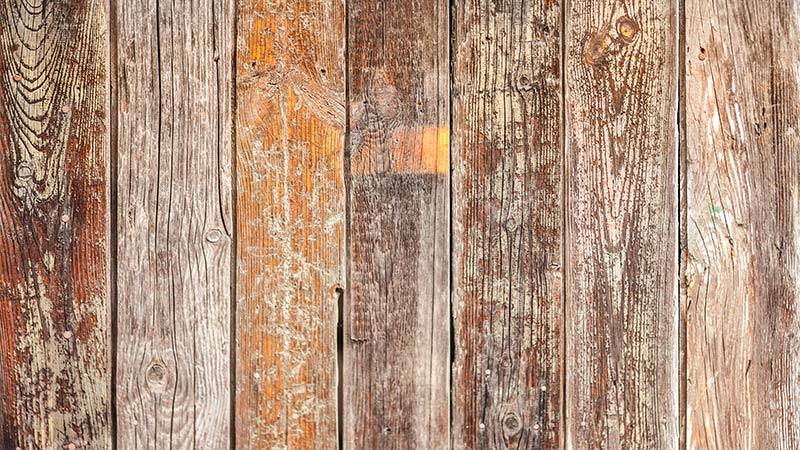
4. Cork
Cork is a remarkable and increasingly popular choice in the world of sustainable building materials, primarily sourced from the bark of cork oak trees. Its eco-friendliness lies in the fact that harvesting cork doesn’t harm the tree; the bark regenerates, making cork a highly renewable resource. This process also aids in carbon sequestration, as cork oak trees store more carbon in their effort to regenerate the bark.
Cork is celebrated for its natural insulation properties, both thermal and acoustic, making it an excellent choice for flooring, wall coverings, and even as an underlayment. It’s also lightweight, resistant to mold, mildew, and water, which adds to its appeal in construction. Additionally, cork’s natural elasticity provides a comfortable, cushioning effect underfoot.
However, cork’s disadvantages include its susceptibility to physical damage like scratches and dents. Over time, it can fade in direct sunlight.
While its production is sustainable, the majority of cork is sourced from the Mediterranean, which can add to its carbon footprint due to transportation, especially for projects in distant regions.
Despite these drawbacks, cork’s environmental benefits and unique properties maintain its popularity in sustainable building designs.
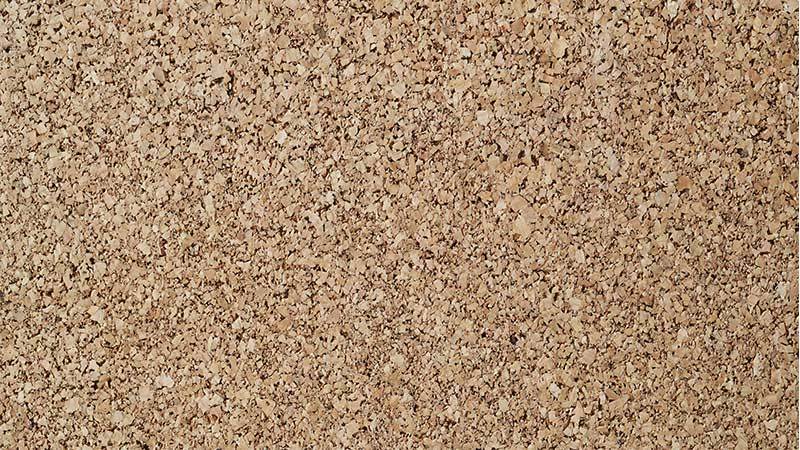
5. Straw Bales
Straw bales, a byproduct of grain production, are emerging as an innovative and eco-friendly building material. Their environmental appeal lies in their status as a waste product; using straw bales in construction turns agricultural residue into a valuable resource, thereby reducing waste.
Additionally, straw is a renewable resource that captures carbon during its growth, contributing to a lower carbon footprint in building materials.
One of the primary advantages of straw bales is their exceptional insulation properties, which can significantly reduce heating and cooling costs in buildings.
They are also relatively inexpensive and easy to source in agricultural regions, making them a cost-effective building material.
Straw bale construction can be a part of creating unique, aesthetically pleasing homes with a natural, rustic charm.
However, there are challenges. Straw bales need to be kept dry to prevent mold and rot, requiring good design and construction techniques. Also, building with straw bales can be labor-intensive and may require thicker walls than conventional materials, which could reduce interior space. Despite these considerations, straw bales remain a compelling choice for sustainable, energy-efficient construction.
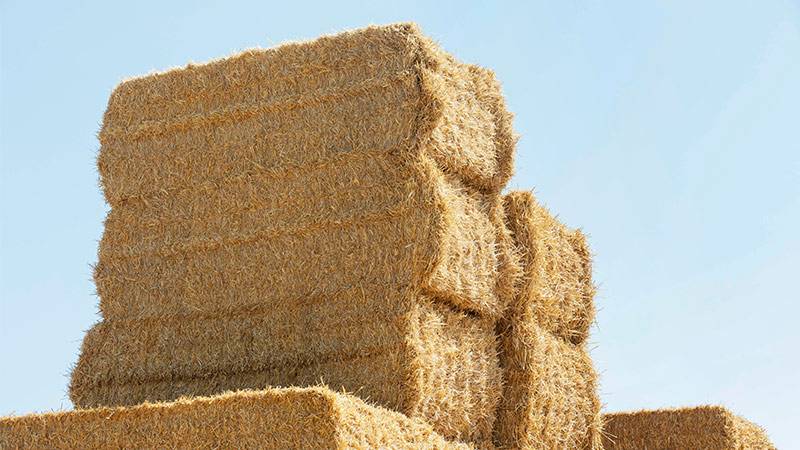
6. Rammed Earth
Rammed earth, an ancient building technique experiencing a modern resurgence, involves compacting layers of earth mixed with natural stabilizers like lime or cement.
Its eco-friendliness is rooted in the use of local soil, reducing the environmental impact associated with transportation of building materials.
Additionally, the energy consumption in producing rammed earth walls is significantly lower compared to conventional construction materials.
Advantages of rammed earth include its thermal mass, which helps regulate indoor temperatures, reducing the need for artificial heating and cooling. This material also offers excellent sound insulation, durability, and a unique aesthetic appeal with its natural, textured layers.
Rammed earth buildings have a distinctive character and blend seamlessly with their natural surroundings.
However, the technique has its drawbacks. It requires skilled labor and meticulous execution, which can be more costly and time-consuming than standard construction methods.
In regions with high rainfall or seismic activity, additional reinforcement might be necessary.
Despite these challenges, rammed earth remains a sustainable choice for those seeking environmentally responsible and visually striking architecture.
7. Recycled Plastic
Recycled plastic is gaining traction as an innovative, eco-friendly building material, transforming waste into valuable construction resources.
This approach to recycling mitigates the environmental burden of plastic waste, a significant global issue, by diverting it from landfills and oceans. The use of recycled plastic in building materials reduces the need for virgin plastic production, which is energy-intensive and contributes to carbon emissions.
The advantages of recycled plastic in construction are notable. It’s incredibly durable, resistant to corrosion, rot, and pests, making it ideal for outdoor applications like decking, fencing, and outdoor furniture.
Recycled plastic is also low maintenance and has a long lifespan, adding to its sustainability credentials.
However, there are some disadvantages. The strength and structural integrity of recycled plastic can vary, making it unsuitable for certain load-bearing applications. Additionally, the production process of converting plastic waste into building materials can be complex and costly.
Despite these challenges, recycled plastic remains a valuable material in the pursuit of sustainable and innovative construction practices.
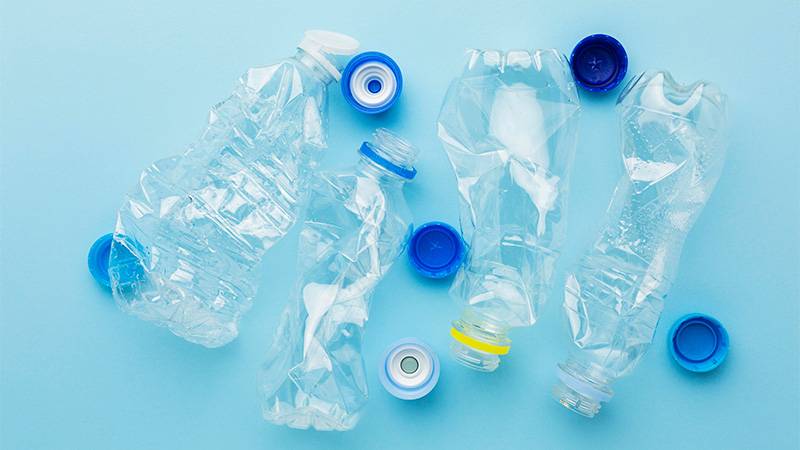
8. Ferrock
Ferrock is a relatively new and innovative building material, often touted as a more sustainable alternative to traditional concrete. It is made primarily from waste steel dust, a byproduct of industrial processes, mixed with silica from ground glass.
This unique composition makes ferrock environmentally friendly, as it not only recycles industrial waste but also absorbs and traps carbon dioxide as part of its curing process, effectively reducing greenhouse gases.
One of the main advantages of ferrock is its strength, which is reportedly higher than that of standard Portland cement, making it ideal for construction that demands durability.
Additionally, its ability to absorb carbon dioxide gives it a unique edge in the fight against climate change.
However, ferrock does have some drawbacks. Being a newer material, it is not as widely available or tested as traditional concrete, which can limit its accessibility and increase costs.
Moreover, the process of creating ferrock is complex, requiring specific conditions and materials.
Despite these challenges, ferrock represents a promising step forward in sustainable building practices, offering an innovative solution to some of the environmental issues posed by traditional construction materials.
9. Sheep’s Wool
Sheep’s wool, traditionally known for its use in textiles, is gaining recognition as an eco-friendly building material, particularly for insulation.
Its sustainability stems from being a natural, renewable resource. Sheep re-grow their wool annually, making it a continuously available material with minimal environmental impact compared to synthetic alternatives.
The process of harvesting wool is also less energy-intensive than manufacturing synthetic insulators.
The advantages of using sheep’s wool for insulation are significant. It has excellent thermal properties, helping to regulate indoor temperature efficiently. Its natural fibers are also breathable, allowing for moisture control within buildings, which contributes to a healthier living environment.
Additionally, wool is naturally fire-resistant and can absorb indoor pollutants, further enhancing its appeal for green construction.
However, sheep’s wool insulation can be more expensive than conventional materials. It may also require treatment to deter pests and enhance its longevity and performance.
Despite these considerations, sheep’s wool remains a compelling, sustainable option for those seeking natural and effective insulation solutions in eco-friendly building designs.
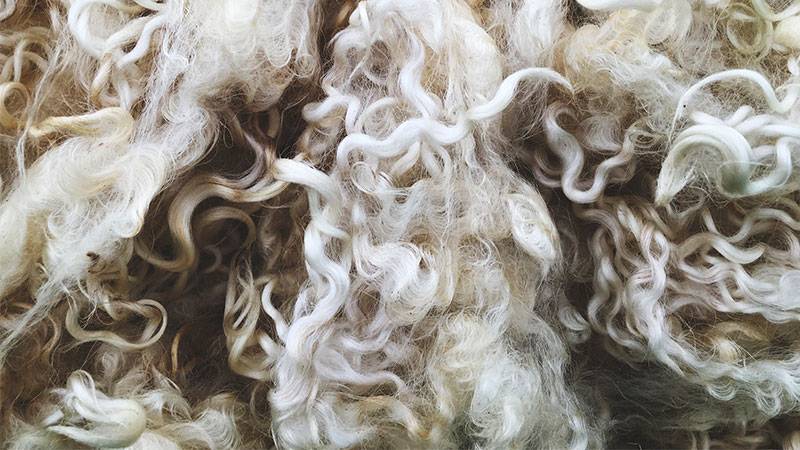
10. Hempcrete
Hempcrete is a sustainable building material made from a mixture of hemp fibers, water, and lime. Its eco-friendliness lies in the use of hemp, a fast-growing, low-impact crop that requires minimal pesticides and fertilizers and absorbs a significant amount of carbon dioxide during its growth, making it a carbon-negative material.
One of the key advantages of hempcrete is its insulating properties. It provides excellent thermal and acoustic insulation, helping to reduce energy costs for heating and cooling.
Hempcrete is also breathable, regulating humidity and contributing to a healthier indoor environment. It’s lightweight, fire-resistant, and pest-resistant, adding to its appeal as a sustainable building material.
However, hempcrete has some limitations. Its lower structural strength compared to traditional concrete means it’s typically used for non-load-bearing walls or as insulation.
Additionally, in regions where hemp cultivation is restricted, sourcing can be challenging, potentially increasing costs.
Despite these drawbacks, Hempcrete is gaining popularity as an environmentally friendly alternative for sustainable construction projects.
11. Mycelium
Mycelium, the root structure of fungi, is emerging as a groundbreaking eco-friendly building material.
Its sustainability is rooted in its natural composition and the low-impact process of its cultivation. Mycelium grows quickly, feeding on agricultural byproducts like sawdust or straw, essentially turning waste into a valuable resource.
This process also consumes less water and energy compared to traditional building material production, and since mycelium is biodegradable, it leaves minimal environmental footprint.
The advantages of mycelium are its remarkable insulating properties and lightweight nature, making it an excellent choice for sustainable insulation. It’s also fire-resistant and can be grown into various shapes and sizes, offering versatility in design.
Furthermore, as a natural material, it contributes to healthier indoor air quality.
However, mycelium’s use as a building material is still in early stages, meaning there’s limited data on its long-term durability and performance. It may also be susceptible to moisture and requires careful installation and maintenance.
Despite these challenges, mycelium represents an innovative and eco-conscious approach to sustainable building practices.
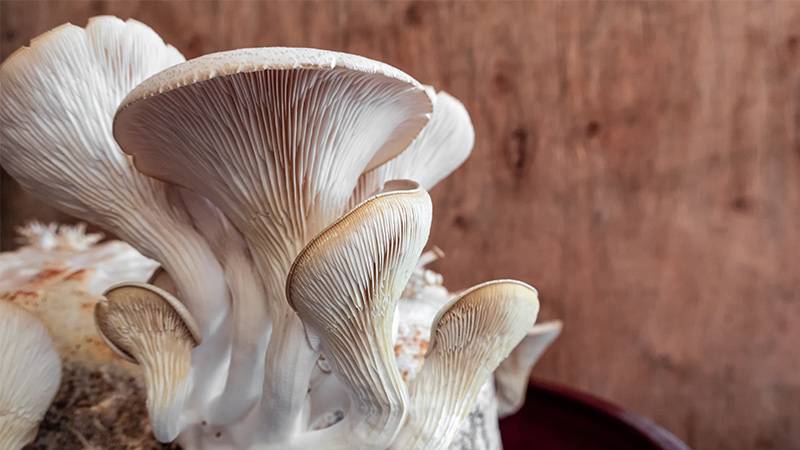
12. Recycled Glass
Recycled glass is an eco-friendly building material that is gaining popularity due to its sustainability and aesthetic appeal.
It is made by repurposing glass waste, which not only reduces the amount of waste in landfills but also requires significantly less energy compared to manufacturing new glass. This recycling process conserves natural resources and reduces the carbon footprint associated with glass production.
One of the main advantages of using recycled glass is its versatility in design. It can be used in a variety of applications, such as countertops, tiles, and decorative elements, adding a unique and artistic flair to buildings.
Additionally, recycled glass is durable and easy to maintain, making it a practical choice for both interior and exterior uses.
However, there are some disadvantages to consider. The process of recycling glass can be costly, potentially making products more expensive than those made with new glass.
Also, the strength and structural integrity of recycled glass can vary, which may limit its use in certain building applications. Despite these challenges, recycled glass remains a valuable material for sustainable and visually striking architectural designs.

13. Plant-Based Polyurethane Rigid Foam
Plant-based polyurethane rigid foam is an innovative, eco-friendly building material derived from renewable resources like bamboo, kelp, or hemp.
Unlike traditional polyurethane made from petrochemicals, this plant-based alternative reduces reliance on fossil fuels and the associated carbon footprint. Its production involves less toxic chemicals, making it a more environmentally responsible choice.
The material offers excellent insulation properties, which is a major advantage in energy efficiency for buildings. It’s lightweight, durable, and provides effective thermal and acoustic insulation, contributing to reduced energy consumption for heating and cooling.
Additionally, its resistance to moisture and mold adds to its appeal in construction.
However, there are some drawbacks. The cost of plant-based polyurethane rigid foam can be higher than conventional insulation materials due to the more complex manufacturing process and sourcing of renewable materials.
Also, as a relatively new product in the market, it might not be readily available in all regions. Despite these challenges, its environmental benefits make plant-based polyurethane rigid foam a promising material for sustainable building projects.
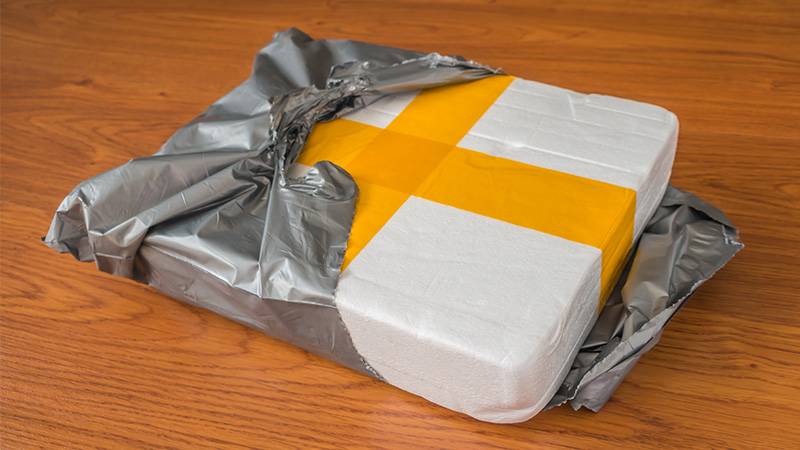
14. Mud Brick (Adobe)
Mud brick, commonly known as adobe, is one of the oldest building materials, renowned for its eco-friendly nature.
Made from a mixture of earth, water, and often organic materials like straw, adobe bricks are sun-dried rather than fired. This natural process significantly reduces energy consumption and carbon emissions compared to traditional brick manufacturing.
Adobe’s advantages lie in its excellent thermal mass, which helps regulate indoor temperatures, keeping interiors cool in summer and warm in winter.
This natural insulation property can significantly reduce reliance on artificial heating and cooling systems, enhancing energy efficiency. Adobe buildings also have a unique aesthetic charm, blending seamlessly with natural landscapes.
However, adobe has some disadvantages. It’s less durable in wet climates and requires regular maintenance to prevent erosion. Adobe structures are also more prone to seismic damage unless properly reinforced.
Despite these limitations, mud brick remains a viable and sustainable option for construction, especially in arid regions, due to its low environmental impact and energy-efficient qualities.
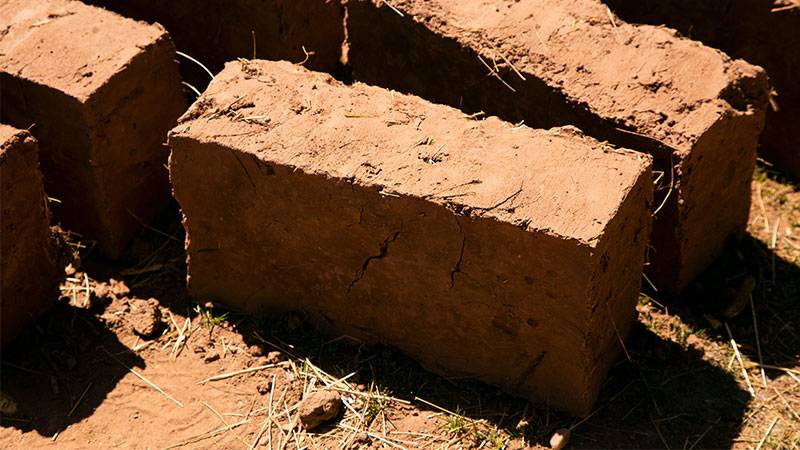
15. Green (Living) Roofs
Green or living roofs, which involve growing vegetation on rooftops, are a sustainable building feature gaining popularity for their environmental benefits.
These roofs are eco-friendly as they contribute to reducing urban heat islands, improve air quality by absorbing pollutants, and enhance biodiversity in urban areas. The vegetation and soil act as natural insulators, improving a building’s energy efficiency by reducing the need for heating and cooling.
Advantages of green roofs include stormwater management, as they absorb and filter rainwater, reducing runoff and strain on drainage systems. They also extend the lifespan of roofing materials by protecting them from UV radiation and temperature fluctuations.
Additionally, green roofs provide aesthetic and recreational value, creating green spaces in urban environments.
However, green roofs have some drawbacks. They require a significant initial investment and a robust structural support system. Maintenance can be more demanding than traditional roofs, needing regular care for the vegetation.
Despite these challenges, green roofs offer a compelling blend of environmental benefits and urban improvement, making them a valuable consideration in sustainable architecture.

16. Low-VOC Paints
Low-VOC (volatile organic compound) paints are an eco-friendly alternative to conventional paints, distinguished by their reduced chemical content.
VOCs in traditional paints contribute to indoor air pollution and environmental degradation, releasing harmful compounds into the air during and after application. Low-VOC paints minimize these emissions, thereby improving indoor air quality and reducing the impact on the environment.
The primary advantage of using low-VOC paints is the significant reduction in harmful emissions, making them safer for both the environment and human health.
They also tend to have less odor, which is beneficial for indoor applications, and they still offer a wide range of colors and finishes.
Additionally, the cleanup process is more environmentally friendly, often requiring only water and soap.
However, low-VOC paints may have some disadvantages. They can be more expensive than traditional paints, and in some cases, their durability and coverage might not match their high-VOC counterparts.
Despite these potential drawbacks, low-VOC paints represent a healthier, more sustainable choice for both residential and commercial buildings, contributing to greener construction practices.
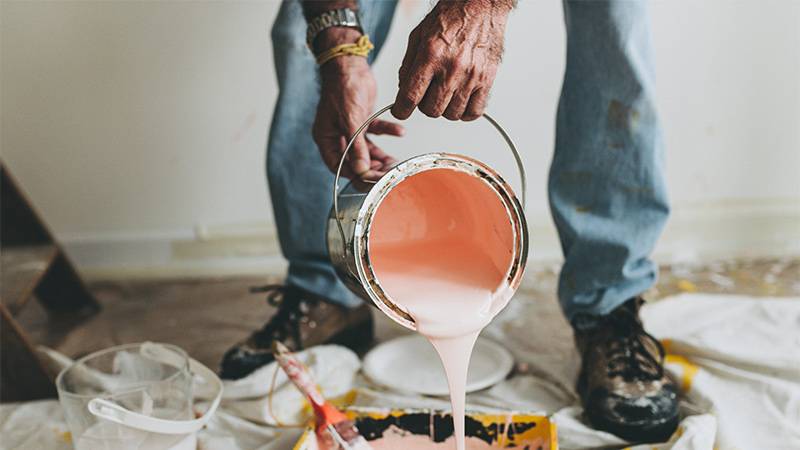
17. Solar Tiles
Solar tiles, an innovative twist on traditional solar panels, are designed to function as both roofing material and solar energy generator. Their eco-friendliness stems from harnessing renewable solar energy to generate electricity, reducing reliance on fossil fuels and decreasing greenhouse gas emissions.
By integrating solar technology into roof tiles, they offer a more aesthetic and seamless alternative to conventional solar panels.
The main advantage of solar tiles is their dual functionality. They provide the protective qualities of standard roof tiles while also generating clean energy. This integration can be particularly appealing in areas with strict housing regulations or for homeowners seeking a more visually appealing solar option.
Additionally, solar tiles can increase a property’s value and provide long-term savings on electricity bills.
However, solar tiles have some drawbacks. They are often more expensive than traditional solar panels and may have lower efficiency rates. The initial investment can be significant, and the technology might not be suitable for all roof types.
Despite these challenges, solar tiles represent a forward-thinking approach to sustainable building, offering an attractive and functional way to incorporate renewable energy into homes.
18. Papercrete
Papercrete is an innovative and sustainable building material made from a mixture of recycled paper, cement, and sometimes additional fibers or additives.
Its eco-friendly appeal lies in the recycling of paper, which not only diverts waste from landfills but also reduces the need for new materials, thereby conserving resources and energy.
One of the key advantages of papercrete is its lightweight nature, making it easy to handle and work with. It provides good insulation properties, contributing to energy efficiency in buildings.
Additionally, the use of recycled paper in its composition makes it a more environmentally sustainable option compared to conventional concrete.
However, papercrete does have some limitations. Its strength and durability can be less than traditional concrete, making it unsuitable for load-bearing structures without additional support.
It may also be susceptible to moisture absorption, requiring protective sealants or design considerations to prevent potential degradation.
Despite these drawbacks, papercrete offers an intriguing alternative for eco-conscious construction projects, particularly for non-structural elements and insulation.
19. Timbercrete
Timbercrete is a composite building material made from a mixture of sawdust and concrete. It stands out as an eco-friendly option primarily because it incorporates sawdust, a waste product from the timber industry, reducing landfill waste and making use of a readily available resource.
The inclusion of sawdust also means that less cement, which has a high carbon footprint, is used in its production.
One of the major advantages of timbercrete is its improved insulation properties compared to traditional concrete, which can enhance energy efficiency in buildings.
It’s also lighter than standard concrete, reducing transportation emissions and making it easier to handle during construction.
Timbercrete blocks can even be made to look like natural timber, providing aesthetic versatility.
However, timbercrete’s disadvantages include potentially lower structural strength than traditional concrete, limiting its use in certain load-bearing applications.
Additionally, as a relatively new material, it may not be as widely available or tested as conventional building materials. Despite these challenges, timbercrete presents an innovative approach to sustainable construction, blending the durability of concrete with the environmental benefits of recycled timber.
20. Earth Bags
Earth bags, a sustainable building material, are made from polypropylene bags filled with earthen materials like soil, sand, or clay.
This method is eco-friendly due to its utilization of natural and locally sourced materials, significantly reducing the carbon footprint associated with transportation and production of conventional building materials.
One of the key advantages of earth bag construction is its low cost and accessibility, making it an ideal choice for budget-conscious and DIY builders.
Earth bags are incredibly versatile, suitable for creating various structures from homes to retaining walls.
They also offer excellent thermal mass, helping to maintain stable indoor temperatures and reducing energy needs for heating or cooling.
However, there are some disadvantages. The labor-intensive nature of earth bag construction can be a drawback, requiring significant physical effort and time.
Additionally, the buildings need proper design and construction techniques to ensure structural integrity and protection against moisture, which can be challenging in humid or rainy climates. Despite these challenges, earth bags are a viable option for sustainable, low-impact construction, especially in areas where other resources are scarce.
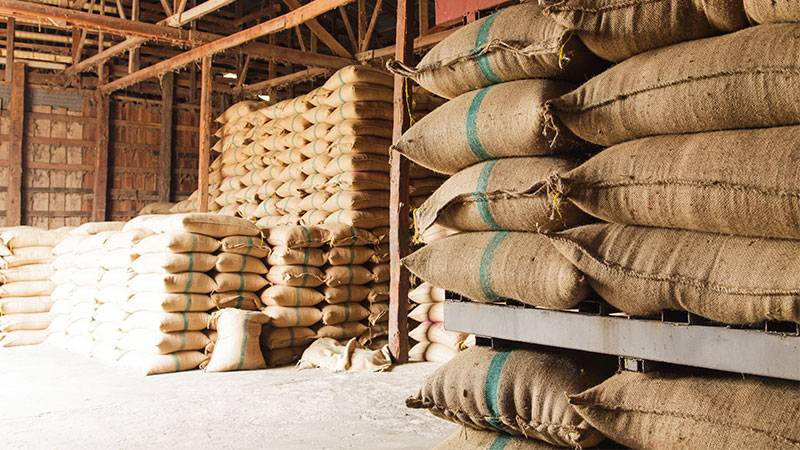
Conclusion
In exploring these 20 sustainable building materials, we’ve seen how innovation and environmental responsibility can go hand in hand. From bamboo’s rapid renewability to the carbon-negative properties of hempcrete, each material offers a unique solution to building more sustainably.
While there are challenges, the benefits of reduced environmental impact, energy efficiency, and resource conservation are clear.
As we strive for a greener future, I encourage you to consider these materials in your next construction project. Let’s build not just for today, but for a sustainable tomorrow. Take the first step towards eco-friendly construction and be part of the change.

